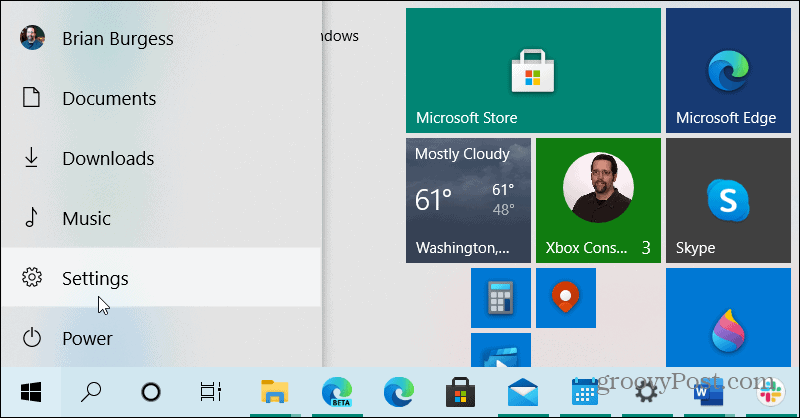How to View Windows 10 Update History

Not all Windows 10 updates require a restart of your PC. If you want to review the history of installed updates you can. Here’s how.
Windows 10 regularly updates automatically in the background. You probably get annoyed when an update is installed, and your system is restarted without knowing about it. But not all updates require a restart, and you might not know one occurred. Here’s a look at how you can view Windows Update history.
View Windows 10 Update History
To get started, click the Start button and click Settings. Or you can open Settings by using the keyboard shortcut Windows key + I.


When the Settings app opens up, click on Update & Security from the menu.


Update History Page
On the “View update history” page, there will be a list of different types of updates. You will see the following:
- Feature Updates: These are the significant updates that typically happen twice a year. For example, at this writing, the most recent feature update is version 20H2 October 2020 Update.
- Quality Updates: These are regular updates that update various aspects of the operating system. Most of these updates are “under the hood” and improve quality and fix multiple bugs in the system. They roll out as cumulative updates and often are tied to “Patch Tuesday.” However, these updates can come anytime, especially if there is a known zero-day threat to Windows 10.
- Driver Updates: These are the updates that help improve the hardware in your system like the graphics card (GPU), Bluetooth radio, or soundcard, for example.
- Definition Updates: These are virus definition updates that happen regularly in the background and help improve Windows 10’s built-in virus and malware protection.
- Other Updates: These are other miscellaneous updates that don’t fall into any of the above categories.


Just expand any of the categories to see what’s included. For example, here, I expanded “Feature Updates” and can see the two most recent feature updates that were installed. And can see the date they were successfully installed. In this example, it is version 2004, aka “May 2020 Update,” and version 20H2, aka “October 2020 Update”. To learn more, you can click the “See what’s new in this update” link.


Here is an example of expanding the Quality Updates section of the update history section. This is where you can uninstall a cumulative update if they cause issues with your system or app. You can scroll through the updates and see the date it was installed. You can also click the link under the update to find out more about what it does. A browser window will open up to Microsoft’s support website if you click a link under the update.


Summing Up
That’s all there is to it. When you are done with the updates section, close out of the “Settings” window.
For more on Windows 10 updates, check out our articles on how to use Active Hours to avoid Windows Update restarts, create a shortcut to Windows Update, or create a shortcut to Windows Update.
And if you are running the latest version of Windows, check out how to check update history on Windows 11.






